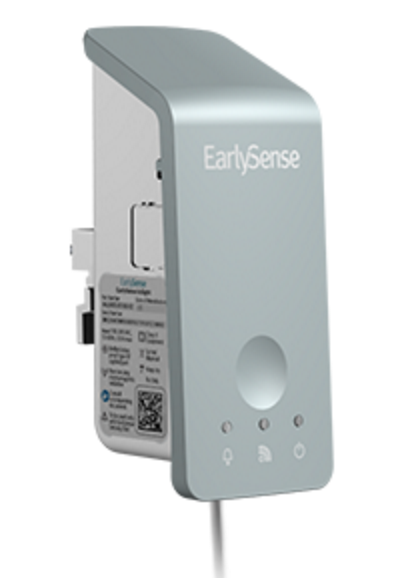 EarlySense launched its EarlySense InSight platform today, a new version of its bed sensor which eliminates the monitor, allowing the platform to be used more easily outside the hospital, in nursing homes and longterm care facilities. Yet another version of the product, for the home, is under development and is slated to launch next year.
EarlySense launched its EarlySense InSight platform today, a new version of its bed sensor which eliminates the monitor, allowing the platform to be used more easily outside the hospital, in nursing homes and longterm care facilities. Yet another version of the product, for the home, is under development and is slated to launch next year.
"The idea is we developed this contactless continuous sensing capability that really improves care," Avner Halperin, CEO of EarlySense, told MobiHealthNews. "The objective is to bring it to low-acuity environments, because if you look at medical systems today, the challenge is to keep patients for as long as possible in as low-acuity an environment as possible. So you want to keep very sick patients outside the ICU and keep sick patients outside the hospital in longterm care facilities and of course as many people at home as you can."
EarlySense makes a passive and contactless bedside monitor that continuously measures respiration rate, heart rate, and motion. The current version sends that data to attached monitor, from whence it can also send alerts to doctors and nurses or interface with the EHR. But InSight eliminates the monitor in favor of a small processing unit.
"We’ve taken the EarlySense monitoring solution, which has the monitor and sensor and the patient and we’ve really done away with the monitor," Halperin said. "So all you need is a smart sensor that plugs to power and directly communicates information to a central station to mobile device that the nurses or caregivers carry."
MobiHealthNews noticed that EarlySense had received FDA clearance for the new product back in June, when the company announced a $25 million funding round.
Halperin also said that later this year the company plans to launch a device that will allow patients to take monitoring to the home. Unlike the meidcal grade products the company currently produces, this would be more of a wellness-focused, direct to consumer device.
This is interesting because in the past the company has indicated that its direct-to-consumer path would primarily happen via partnerships such as the ones the company has with Samsung and iFit.
Of course, hospitals may also want to switch to InSight to streamline their monitoring workflow, and that's also a possibility, Halperin said.
"It can be used in hospitals and some will want to use it," he said, "but the real opportunity is to take monitoring where monitoring has not gone before."

















